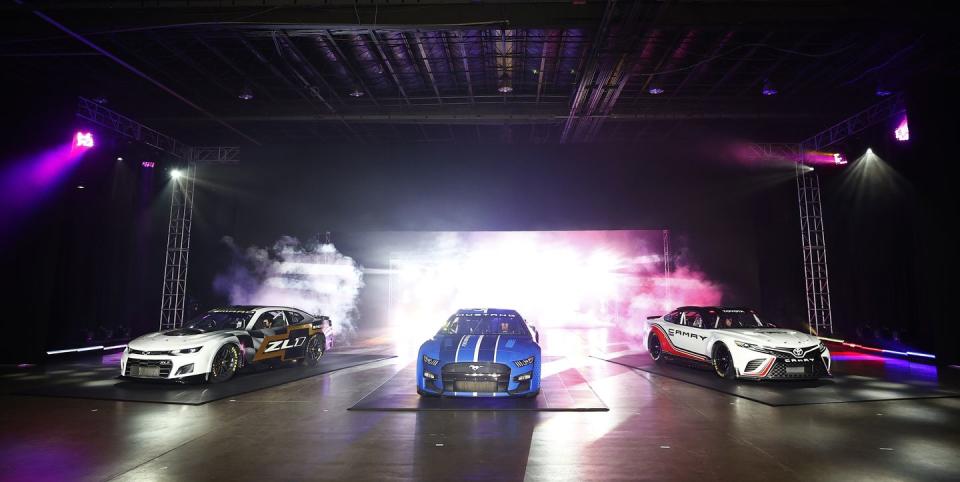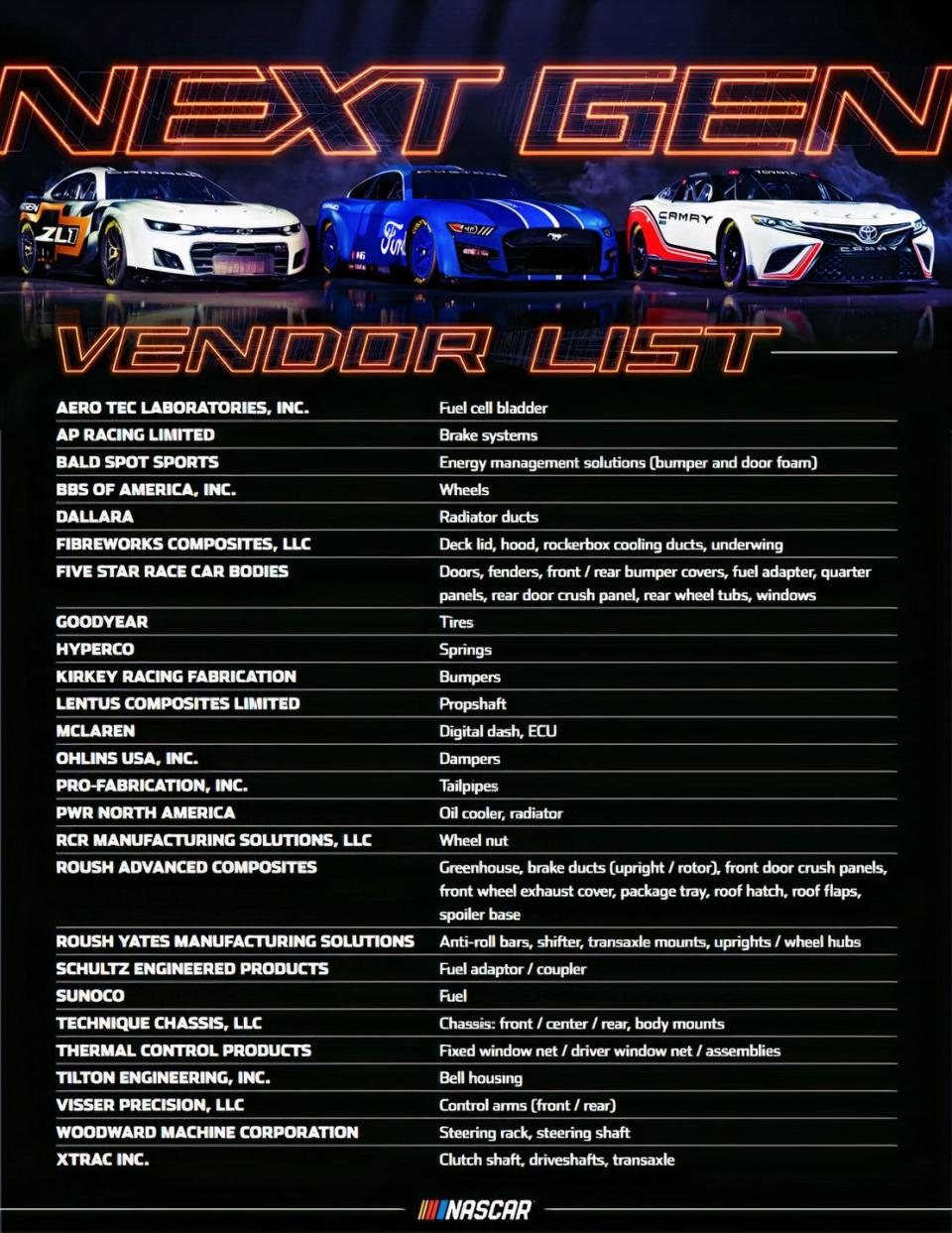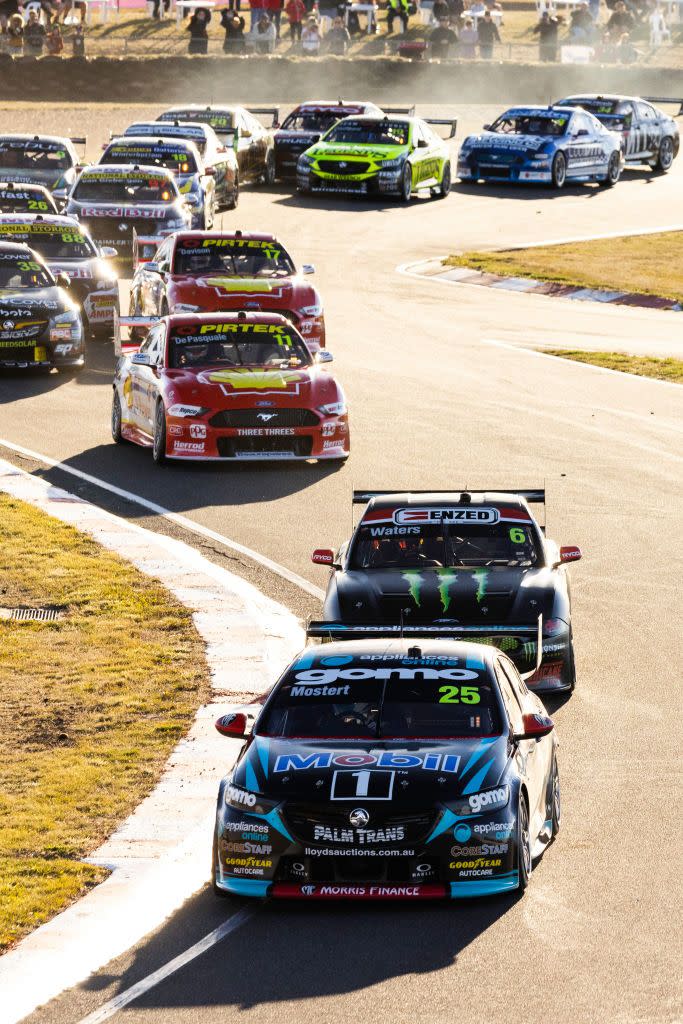Everything You Need to Know About NASCAR Next Gen

There are three qualifications that will ultimately determine the success of the evolutionary new NASCAR Cup Series car that will debut next season during Daytona Speedweeks.
Those pillars are closer competition, cost containment and manufacturer relevance.
Of the three, that last qualification is arguably the most important. Simply stated, history will remember how many additional OEMs the next-generation platform was or wasn’t responsible for delivering during its life cycle.
This is a matter of not just the chassis and body but also the hybrid engine that is set to follow it over the next several seasons.
It would not be an overstatement to suggest that this is a pivotal crossroads in the history of NASCAR and the sanctioning body has responded aggressively.
Make no mistake, the Next Gen is a spec car in every sense of the word, no matter how much the industry may not like using it. They prefer to call it a 'standardized parts' platform. Regardless, for the first time in Cup Series history, single source manufacturers will be responsible for building the chassis, providing parts and supplying a carbon composite body.
What is different is the stylings of each body with Chevrolet, Ford and Toyota having distinctively different shells that more closely resemble the showroom counterpart Camaro, Mustang and Camry. The platform will continue to use the current generation internal combustion, pushrod V8 produced by each manufacturer as well.
At some point over the next decade, that engine will be phased-out with a hybrid, and that is when NASCAR must deliver additional OEMs.
"In my opinion, the importance of this car can’t be overstated," said NASCAR president Steve Phelps. "There are many things that Next Gen will do for us as a sport. ... The styling is going to be amazing. I think the racing is going to be better based on the aerodynamics of the vehicle.
"The costs associated with the vehicle will be lower in terms of its absolute cost as well as the number of cars that will be necessary to run and run up front. Those are all wins for us.
"I believe new OEMs and the relevance of this sport, where this sport now ranks within the sports entertainment landscape, is different than it was a year ago, two years ago, three years ago. With that, as well as the Next-Gen car coming out next year, I think there's going to be some renewed interest from an OEM perspective."
And again, that renewed interest has to begin with a new engine.
"I know for a fact we will not have a new OEM unless we change our engine," Phelps said. "I would be surprised if a new OEM came in without some type of electrification. I'm not talking about all-electric, I'm talking about a hybrid system."
The only manufacturer that could theoretically come in before a hybrid is introduced would be Dodge, which still has a current-generation Cup Series engine used until it departed the sport in 2013.
However, the cost to develop a hybrid in addition to modernizing the 2012 engine would be astronomical.
WHAT'S DIFFERENT?
18" aluminum wheels with lower profile tires
New transaxle will combine the transmission and rear gears into one package
Independent rear suspension
Sealed bottom, full underbody and rear diffuser
Redesigned chassis features new front and rear bumpers.
Front and rear clips bolt on to the center section
Composite body and symmetrical car
Engine intake from the grille area with a new longer airbox
Hood exits incorporated to assist with engine cooling
SPECS
Overall Length:193.3”
Overall Height:50.2”
Weight: 3,200lb (without driver and fuel)
Width:78.4”
Wheelbase:110”
Horsepower:670 hp or 550 hp (track dependent)
Transmission:5-speed sequential shift (plus reverse)
(Story continues below graphic)

NASCAR had considered implementing a carbonfiber chassis but opted to retain its traditional steel tubular frame equivalent for now. The chassis will be supplied by Technique Inc., owned by former Indy car racer Ronnie Johncox, with the company recently opening a facility in North Carolina.
In the name of safety, the driver will be moved 1.6” further towards the center of the car and door bars have been moved further outwards.
The Next-Gen includes a split exhaust system, which now means exits on both sides, which has generated a radically different sound during tests over the past year. That’s also generated concerns from drivers over cooling and driver comfort.
Instead of a four-speed manual gearbox, the Next-Gen features an Xtrac produced five-speed sequential shift (plus reverse) transmission, that will use a ‘gear stick’ rather than a paddle-shifter. It was important to NASCAR that drivers would have to take a hand off the steering wheel to shift on restarts and on road courses.
Sequential gearboxes? Fifth gear?
Take a ride in the NEXT GEN car with @Erik_Jones, via @NASCAR. pic.twitter.com/z9AgT24XaJ— NASCAR on NBC (@NASCARonNBC) January 17, 2020
The car features independent rear suspension -- a departure from the classic solid axle rear suspension. Regulations will keep drivers in fifth gear for most tracks, with Martinsville Speedway in Virginia being an obvious exception.

If that sounds like an Australian Supercar, that’s because there are countless borrowed elements from that discipline, a byproduct of NASCAR executives spending a considerable amount of time Down Under to learn about the platform.
There’s also a lot of GT3 built into the Next-Gen, the total package reflecting NASCAR’s increased road and street racing future.
"There is so much different about it with the independent rear suspension and the way the rear differential is, the suspension, the shocks, the springs, you name it," 2017 Cup Series champion Martin Truex Jr. said. "It’s a whole different ballgame."
Even pit stops will take on a new look next season with the center-lock, single lug aluminum wheel replacing the traditional five lug steel platform. The so-called ‘gas man’ could become the most important crew member next season with a simplified wheel changing process.
"The choreography of the pit stop is going to look exactly the same," Phelps said. "Putting the one lug until it's tight and locks is going to be the only difference as part of this.

 Yahoo Autos
Yahoo Autos 